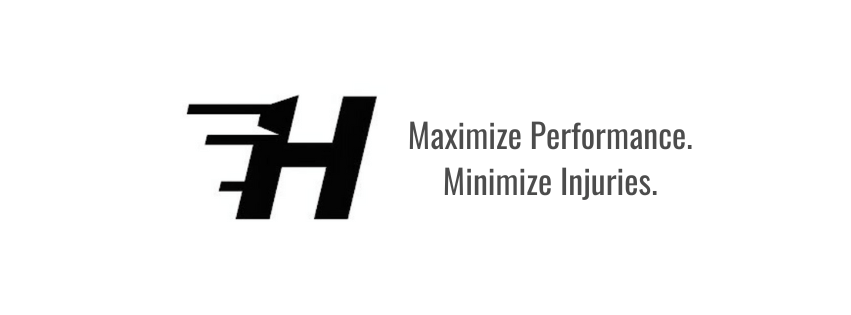- Hybrid Performance Newsletter
- Posts
- Why Strength Training is a Game-Changer for Triathletes and Swimmers
Why Strength Training is a Game-Changer for Triathletes and Swimmers

For years, endurance athletes often viewed strength training as a secondary pursuit, or even worse, something that would add unwanted bulk and slow them down.
Modern sports science unequivocally demonstrates that incorporating a smart, targeted strength training program is not just beneficial, but absolutely crucial for triathletes and swimmers looking to maximize performance, prevent injuries, and extend their athletic careers.
Let's dive into the evidence that's driving this paradigm shift.
The Science Behind the Gains: Why Strength Matters
At its core, swimming and triathlon demand a unique blend of endurance, power, and resilience. While countless hours in the pool, on the bike, and on the run build sport-specific conditioning, strength training addresses fundamental physiological adaptations that endurance work alone cannot achieve.
Enhanced Power and Efficiency:
Think about the propulsive force needed for a powerful swim stroke, an explosive bike pedal stroke, or an efficient run stride. These actions are driven by muscle contractions. Strength training improves the rate of force development and maximal force production of your muscles.
Swimming: Studies have shown that swimmers incorporating strength training exhibit improved sprint times, increased stroke power, and better start and turn performance. By strengthening the lats, shoulders, core, and glutes, you create a more stable and powerful platform for pulling water.
Cycling: Stronger glutes, hamstrings, and quadriceps translate directly into more power output on the bike, especially when climbing or pushing through headwinds. This isn't about becoming a bodybuilder; it's about making each pedal stroke more effective.
Running: A strong core, powerful glutes, and resilient leg muscles lead to a more economical running stride, reducing ground contact time and improving push-off. This means you can maintain speed with less effort.
Injury Prevention: Building a Bulletproof Body:
This is perhaps one of the most compelling arguments for strength training. Repetitive motions inherent in swimming and triathlon place significant stress on joints, tendons, and ligaments. Weak muscles are less able to absorb impact and stabilize joints, leading to common issues like:
Swimmer's Shoulder: Often a result of imbalances and weakness in the rotator cuff and scapular stabilizers.
Runner's Knee & Shin Splints: Frequently linked to weak hips, glutes, and core, leading to poor biomechanics.
Lower Back Pain: Especially prevalent in cyclists due to prolonged flexed positions and weak core muscles.
Strength training directly addresses these vulnerabilities by:
Strengthening connective tissues: Tendons and ligaments become more resilient.
Improving muscle balance: Correcting asymmetries that can lead to overuse injuries.
Enhancing joint stability: Stronger muscles provide better support for critical joints.
By making your body more robust, you spend less time on the sidelines and more time training and competing.
Improved Body Composition and Metabolism:
Muscle tissue is metabolically active, meaning it burns more calories at rest than fat tissue. While endurance training certainly contributes to leanness, strength training is particularly effective at increasing lean muscle mass.
Increased Metabolism: More muscle mass means a higher resting metabolic rate, which can aid in maintaining an optimal race weight.
Better Power-to-Weight Ratio: For triathletes, a favorable power-to-weight ratio is critical, especially on climbs. Strength training helps build functional muscle that directly contributes to power without adding unnecessary bulk.
Enhanced Bone Density:
Weight-bearing exercises, a cornerstone of strength training, are essential for maintaining and improving bone mineral density. This is particularly important for athletes, especially women, to counteract the risk of osteoporosis later in life. Swimming, while fantastic for cardiovascular health, is not a weight-bearing activity, making land-based strength training even more vital for swimmers.
Mental Toughness and Resilience:
Pushing through a challenging set of squats or deadlifts builds mental fortitude that translates directly to race day. The discipline, focus, and grit required in the gym reinforce your ability to push through discomfort during a long swim, bike, or run.
Practical Application: Smart Strength for Endurance Athletes
So, what does this look like in practice? It's not about lifting maximal weights like a powerlifter, but rather focusing on functional movements that mimic sport-specific actions and build overall athleticism.
Focus on Compound Movements: Exercises that work multiple muscle groups simultaneously (squats, deadlifts, lunges, rows, overhead presses) are incredibly efficient and effective.
Prioritize Core Strength: A strong core is the foundation of all movement. Planks, Russian twists, and medicine ball exercises are excellent.
Address Imbalances: Pay attention to weaker areas, especially posterior chain muscles (glutes, hamstrings) which are often underdeveloped in endurance athletes.
Periodize Your Training: Integrate strength training into your overall season plan. You might have a higher volume in the off-season and taper it down closer to key races.
Consistency is Key: Even 2-3 sessions per week can yield significant benefits.
The Verdict: It's Time to Embrace the Weights
The evidence is clear and compelling. For triathletes and swimmers, strength training is no longer an optional add-on; it's a fundamental component of a comprehensive and effective training program. By building power, preventing injuries, and enhancing overall resilience, you'll not only shave minutes off your race times but also enjoy a longer, healthier, and more fulfilling athletic journey.
Talk soon,
Dr. Sandra and Team